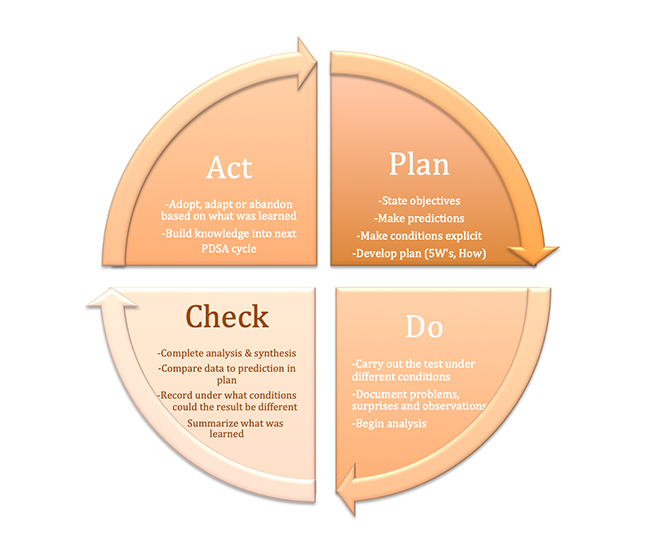Before we can consider where to find the next generation of food safety professionals, we must consider what is a food safety professional. For many people, this question will be answered by describing a set of knowledge and expertise. One might first consider an understanding of the physical, chemical and biological hazards that are associated with food, including the various pathogens responsible for human illness. Additionally, the knowledge could include an understanding of HACCP and risk management strategies for addressing these hazards, including the various processing techniques that can be applied to food. Building further, perhaps we would add knowing chapter and verse in Title 21 of Code of Federal Regulations (21 CFR). Perhaps expertise is expected regarding the required documentation for FSMA and the associated regulations and guidance documents. If you are reading this article, you probably have other skills that you would add to this list. For example, IFT has been promoting its Certified Food Scientist (CFS) credential to recognize the possession of a significant amount of this knowledge and expertise, including expertise in food safety. This lays a good foundation but would be expected to some degree in any food scientist, and it is not the entire criteria.
One must consider what more is needed to make a food scientist into a food safety professional? I am sure there are some people who will insist that we need professionals who understand all the rules and regulations to ensure compliance and thereby ensure food safety. However, when examined closely, we find that many of these skills relate more to regulatory compliance. The regulations have been promulgated to promote safety and fair trade. The link between regulatory compliance and food safety is strong and may be enough to justify adding this attribute to our growing description of the food safety professionals we seek, but regulatory compliance is considered a separate if somewhat overlapping area of expertise in the CFS credential.
Building further, perhaps adding a performance-based attribute will provide the necessary distinction of what makes a true food safety professional. Perhaps a food safety professional is a food scientist that identifies hazards (and potential hazards) and seeks to prevent them from impacting human health. With a little consideration, though, one realizes that anyone working in the food industry must learn to identify hazards and potential hazards. Everyone must seek to prevent hazards from impacting human health. The line worker must make decisions daily based on the training they have received to ensure they do not contaminate the product stream. The maintenance worker needs to be sure that they do not unintentionally add lubricant to a product stream. The CEO needs to create a culture where one of the first questions considered for any change is the impact it will have on food safety. After this reminder that everyone working in the food industry must be safety minded, we can return to the question of what is a food safety professional.
With the above preamble, let me opine that a food safety professional is a food scientist who materially impacts the safety of a portion of the food supply. This person may or may not have an actual degree in food science but will have acquired the knowledge necessary to materially contribute to food safety efforts. With this description, I suggest that the next generation of food safety professionals will set the standards for safety in the coming decades. They must have both knowledge of what has gone before and be able to identify new hazards and potential hazards. As a form of succession planning, it is prudent to consider where we will find the next generation of food safety professionals.
As a greying food scientist or more specifically, a food chemist from the tail end of the baby boomers, I have considered what has led me to more than dabble in food safety. As with most technical players in the food industry, I have accumulated knowledge and expertise across many fields including chemistry, microbiology and food science on the way to achieving a CFS certification. This knowledge is the gears and cogs that drive the engines of critical thinking, problem analysis and preventative problem analysis. These engines allow me to be effective as a food safety professional. I am involved in food safety because food safety is everyone’s job in the food industry. I am involved in food safety because food safety problems were presented to me or because I have identified food safety problems. Most importantly, I have worked to find solutions to these problems and potential problems.
This experience leads me to conclude that food safety professionals are developed and nurtured as opposed to being found. For almost any position, everyone seeks to hire that 35-year-old with five to 10 years of experience, depending on education. Unfortunately, this means that few are willing to invest in those early years of nurturing right after a person graduates. The pool of candidates is limited because studying food science is not viewed as having the same cache as going into law or medicine. The returns for going into finance can be extraordinary. Worse still is that a typical food science student aspires to product development or perhaps research and development as opposed to going into operations or quality assurance. These students do not necessarily expect to change the world with new products or ideas, but they are not aware of the breadth of opportunities in the food industry. It is a reality that very few food science students aspire to work in quality assurance or quality control—areas that are more likely to lead to food safety careers. In any event, all food science students will need to get some seasoning to become the next generation of food safety professionals, regardless of the career path they take.
Assuming that an institution or company wants to add to the pool or potential pool of food safety professionals, there a number of options and opportunities. These are not as simple or as immediately goal oriented as making those perfect hires, but the institution will get some benefits now and will be casting bread upon the waters that has the potential for long-term benefits.
Inspiring students to explore food science is the first step. Encourage food scientists in your organization and community to mentor, to be judges at science fairs, to visit and participate in career fairs, and just be visible in their communities. I have given guest lectures in a variety of forums on such topics as fraudulent labels and food adulteration. I was lucky to have an uncle who introduced me to two professors in food science during my junior year of high school. I never looked back. Not all of the students we touch will be inspired to select food science, but they will be aware of the opportunities. These efforts should increase the potential pool.
Offer internships to students early in their education. By the time a student is a junior or senior in college, his or her educational path is largely set. The costs for a change in major can become prohibitive. If you reach out to students in their first or second year and expose them to opportunities to make the food supply safer and to better feeding the world, they have the option of choosing food science and maybe eventually becoming those needed food safety professionals. The research program I run for SmartWash Solutions provides opportunities for up to 12 students to assist with the design and execution of cutting-edge research in food safety for the fresh cut produce industry. With a little training, these students can learn to operate pilot plant equipment and learn to analyze samples. These young, enthusiastic students enjoy the opportunity to work in this team environment. The internships are vastly superior to jobs working in fast food restaurants in terms of educational value. These students allow me to accomplish much more than I can alone. Interns can become great regular employees, although it may not occur immediately due to their needs to finish their educations.
Mentoring all those who are coming along behind you is another way to increase the pool and to find the next generation of food safety professionals. Take the time to explain why you have asked for things and explain the importance of tasks. Expose people to the critical thinking and problem solving process of enhancing food safety. Let them see how food safety makes a difference.
There is little doubt that food safety professionals are needed today and will be needed tomorrow. Turnover is as inevitable as death, and we are going to need new champions of food safety. Some might argue that the need is greater today than ever before. Others would argue that detection and reporting have just made the problems appear bigger with the advent of the powerful molecular biology tools being applied today. In either case, there have certainly been some recent outbreaks that have made headlines including those involving romaine lettuce. Additionally, FSMA is focusing more attention on food safety and mandating that people with specific skills perform various required tasks. Clearly, the need for food safety professionals is ongoing.






















